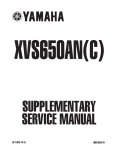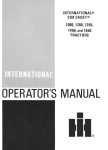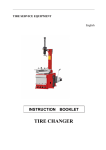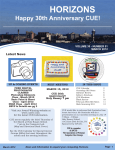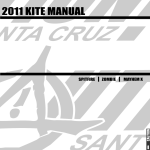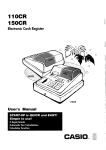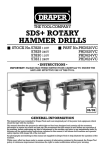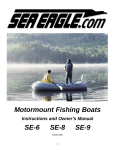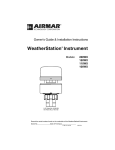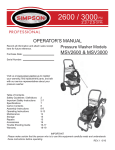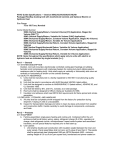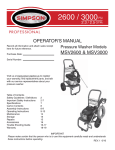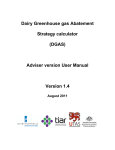Download Sea Eagle Boats LongBoard SUP LB11 Owner`s manual
Transcript
Sea Eagle LongBoard LB11 Instruction & Owner’s Manual VIDEO INSTRUCTIONS For video instructions visit SeaEagle.com/Instructions Sea Eagle Boats Inc. 19 N. Columbia Street, Suite 1 Port Jefferson, NY 11777 1-800-748-8066 September 2012 scan this code or visit http://sea.gl/vilb Sea Eagle Guarantee Congratulations on purchasing a Sea Eagle! With over 40 years of experience in designing, selling and using these quality inflatables, we’re confident that you are going to love your Sea Eagle and we’re ready to proudly stand behind them. Sea Eagle Warranty All Sea Eagle products come standard with a 3 year warranty against any manufacturing defect that begins the date that your product is delivered. Sea Eagle will refuse delivery on all packages without a valid return authorization number and will not be responsible for the shipping or handling charges. To obtain a return authorization number, please contact Sea Eagle directly unless you purchased from an authorized dealer/reseller in which case you should contact them for more information. Sea Eagle must inspect equipment in order to determine if there is a defect. In the event that an item must be shipped back to us for inspection, Sea Eagle will only reimburse the standard return shipping charge through FedEx, UPS or the U.S. Post Office at published shipping rates. Retail shipping outlets like The UPS Store will not be reimbursed and you will be responsible for handling and packing charges. The Sea Eagle warranty does not apply to products that are manufactured by Minn Kota or Torqeedo. These products are covered by their own, respective warranties. Please refer to the manufacturer’s warranty of each product for details. If you received an item damaged, please call the shipping carrier to report damaged merchandise. Do not return damaged merchandise until it has been inspected by the carrier. Sea Eagle will be notified by the carrier when they have completed their inspection and if necessary, Sea Eagle will arrange for the repair or replacement of damaged merchandise. Decals, Stickers & Registration Always contact your state boating authorities for information on boating registration and regulations. Most states require you to register your boat if you are using a motor.* Upon registration it may be required to provide the Manufacturer’s Statement of Origin. Purchases made through an authorized dealer or reseller may require for you to contact them directly in order to obtain this. You may be charged your own state sales tax if you were not charged sales tax at the time of purchase. Registered boats generally require for the registration number to be applied to the boat. We do not recommend the use of decals or stickers as they tend to crack and peel over time with the repeated inflation and deflation of your Sea Eagle. Instead we suggest applying these numbers to a small piece of hard plastic or marine plywood and hanging it from your boat like a license plate if permitted by your state. Another method is to apply the numbers to the hull using either PVC based paint or permanent marker. * Please note that our Sea Eagle Explorer Kayaks, FastTrack Kayaks, Sport Kayaks and LB-11 LongBoard are not rated for use with a motor. Contact Us Unlike many other companies today we pride ourselves on answering the phone and helping you with any concerns, questions or special ordering needs that you may have! Feel free to give us a call at 1-800-748-8066 and we will be happy to talk with you! Our business hours are Monday to Friday from 9-5 (EST). Sea Eagle Boats Inc. 19 N. Columbia Street, Suite 1 Port Jefferson NY 11777 1-800-748-8066 [email protected] 1 Operating Your Sea Eagle The Basics: Stand Up Paddling Before starting make sure that your LongBoard is fully inflated to 12 PSI. When standing the board on the water, the board will flex slightly with your weight, but the board should not “bend” or “crease”. If you are not an experienced stand up paddler, we suggest that you start in calm shallow flat water and practice for an hour or two before paddling out into deeper water. We also recommend that you do so when the water temperature is comfortable for swimming. Do not be discouraged if you fall in a few times. Standup Paddling is much like water skiing, it takes some practice and experience to be proficient. Give it some time and don’t give up. This is a wonderful experience and pastime once you get used to it. When getting on the board, have your SUP paddle already in your hand and make sure you are in deep enough water (1’ or more) so the large skeg is not scraping the bottom - you want it to be free to do its thing. Center your foot on the board and stand up bringing your other foot up onto to the board one or two feet in front of your other foot. Once you are standing, move your feet (one at a time) further to sides, one a little bit in front of the other. Use your SUP paddle for balance, switching it side to side as needed. It is a good idea to get used to moving your feet forward and backward, always using your SUP paddle to counter balance your weight. As soon as you are comfortable, start paddling forward keeping most of your weight in the center of the board. As you paddle forward, switching your paddle from one side to another, experiment paddling with longer and shorter strokes. Please note, you can paddle two strokes or more on one side if you have sufficient momentum. As the board turns to the other side, switch your paddle to correct. The Basics: Sit Down Paddling Before starting make sure that you have installed your deluxe inflatable seat on the LongBoard and it is properly attached (as directed in this manual). The sit down position is ideal for using our optional foot rest as you’ll paddle better and faster if you have a secure foot brace to push your feet against. For sit down paddling use the AB-30 kayak paddle. Flat Open Waters, Waves & Ocean Surf: Once you become proficient in paddling shallow water, you can expandyour practice to deeper waters. As time goes by, you can try paddling on rougher water days, getting used to the drop and pitch of larger lake or bay waves. Once you feel comfortable with paddling on flat water in different wave conditions, you can consider paddling in ocean surf. Again, we think you should go out on calm day to start. Try to pick a day with small waves that you can practice in. As you become used to smaller ocean waves, then try larger waves. Here, some knowledge of surfing and swimming in the ocean is very important. These instructions are not sufficient to going into detailed surfing lessons. We suggest you go online and read up on surfing, if you do not have ocean surfing experience. Please also note, there are many good surfing courses offered locally throughout the country that you might consider. Bay, Lake & Ocean Paddling Long Board 11 can be used on lakes, bays and oceans. One thing you might notice if you are accustomed to hard hull kayaks or canoes is the natural yaw (side to side motion). The two small skegs and the large center skeg prevent most of the yaw. The way you paddle can prevent most of the rest of the yaw. Big Paddling Tip: When you begin to paddle, paddle slowly at first, building speed with each stroke to control the natural yaw further and allow you to paddle straighter and faster. Sit Down Ocean Surfing The Sea Eagle Long Board is a great pleasure on the ocean. Those not familiar with the ocean should take appropriate care, and always paddle within range of a lifeguard station. 2 Surfing Tips Warm-Up Always perform some warm-up stretches before entering the surf. This will reduce the risk of muscle injury or cramp while you're surfing. It also gives you the opportunity to check for rips and the best spot to catch waves. Awareness (Patrolled Beaches/Surf Conditions) Be aware of other surfers and water users, of the surf conditions, and of where you are surfing. If you are surfing on a patrolled beach make sure that you keep within the designated surfing are. Take note of where you should be surfing before you go out, and make sure you stick to it when you are out. Make sure that the surf is safe before you go in. If you are going surfing at a spot you are unfamiliar with it is a good idea to get some advice from a local. Comfort Zone/Fitness/Food You should only surf in waves that you are comfortable in, and never go into ocean waves that are rougher than you can handle. Never lose sight of the oncoming waves and NEVER exhaust yourself in the ocean. It's always better to end the day early and safe than to push your luck when you're tired. Make sure you are physically fit when surfing, you need to be able to swim back to shore if you lose your board at the end of an exhausting session. It is also a good idea not to go surfing until 45 minutes after a meal, the same as you would for swimming. Practice The best way to become a better at anything is practice, practice, practice. If you want to improve your abilities than you need to be in the water surfing as regularly as possible. Priority Always make sure that you are not taking anyone else's wave. Remember, the surfer who is closest to the breaking wave has priority. If you see someone already on a wave then the wave is taken and you'll have to wait for the next one. Know When To Hold/Know When To Throw) It's very important to know when to hold onto your board and when to let go of it. Hold on to your board if you are paddling out, you'll get out back to the line up more quickly and you won't put anyone paddling out behind you at risk. Throw your board if you are about to wipe out as you are far more likely to sustain an injury if you and your board are getting washed around together. The Buddy System Although the LongBoard is designed for solo use, we do recommend that you go out with at least one other person. Not only do we believe you'll have more fun sharing the experience but you'll always have someone to help you out if you need it and the same for your friend if they need help. Having a swimming or surfing buddy is a fundamental principle that shouldn't be ignored. Rips A rip is a strong undercurrent in the ocean. You can recognize rip currents by looking for a channel of churning or choppy water, an area where the water is distinctly a different color, a line of foam, seaweed or debris heading out to sea or a break in the wave pattern. According to the NWS (National Weather Service) wearing polarized sun glasses makes it easier to see the signs of a rip current. Escaping A Rip Current If you are caught in a rip remain calm and conserve energy as you'll need it to swim back to safety. You may not realize you are in a rip current until you are suddenly further away from the shore than you realized. It is important that you DO NOT SWIM TOWARD THE SHORE. Swimming towards the shore is like swimming upstream in a river and will tire you out before long. Instead what you should do is swim parallel to the shore in order to escape the rip current. Once you feel that you're out of the current, turn towards the shore. If you cannot swim out of the rip current, calmly float or tread water until you are out of the current. Exhaustion is your biggest enemy, don't fight a rip current. When you are out, swim toward shore. 3 Safety In a manual of this type it is impossible to give adequate space to the topic of water safety. For further information on boating safety, visit USCGBoating.org or enroll in one of the excellent water safety courses provided. It is your responsibility to be aware of and comply with all relevant safety regulations. For all water recreation or sport you should have a reasonable swimming ability. Just as swimmers have a cardinal rule about not swimming alone, it is strongly advised that you should never go boating alone. Boating Safety Tips • Always wear a USCG approved PFD (life vest) at all times while on the water. • Be aware of your local boating rules and regulations and abide by them accordingly. • Check inflation levels each time before you go out and inflate your boat for a full 24 hours before undertaking long trips. • DO NOT allow children to use Sea Eagle unsupervised. • DO NOT consume alcohol while boating or operating a boat while under the influence of alcohol or drugs. • DO NOT drag your Sea Eagle over rocks or gravel if it can be avoided. • DO NOT exceed the certified maximum capacities of this boat under any circumstance. • DO NOT go boating alone. • DO NOT use compressors, co2 or compressed air for inflation, only use Sea Eagle recommended pumps. • DO NOT use your Sea Eagle Boat as a personal flotation device as they are designed for leisure/recreation in mind. • DO NOT sleep inside of your Sea Eagle while on the water. Safety Equipment The type of water conditions you are on should determine the type of safety equipment that you should have on board. For all types of boating we strongly recommend that every passenger wear a USCG approved PFD (personal flotation device) like a life vest. In most places this is a requirement by law, but from our point of view it is also an exercise of good judgment to have a PFD for all passengers. Other important items to consider for all types of boating… Drinking Water & Snacks: Kayaking is a physical activity that can work up both a thirst and a sweat and especially on a hot or warm day it is a good idea to have drinking water readily available to you to prevent dehydration. Bring a good amount of water for all passengers as you want to avoid drinking the water you’re kayaking in which may be full of contaminants. Extra Clothes/Layers: You never know when the weather can change and it’s a good idea to come prepared with extra clothing. If you have a dry (waterproof) bag than we recommend storing them inside so they’re not damp in case of emergency. First Aid-Kit: The contents of the kit may vary depending upon your preferences, but make sure to carry a kit that reflects the possible dangers for the conditions you are in. Foot Pump/Repair Kit: Although our boats are both durable and rugged, it may be possible that you need to make a repair while on the water in which case you’ll need the repair kit and the foot pump to re-inflate the boat. If this is your first repair, you may also want to bring this instruction manual with you. Sun/Rain Protection: A hat can protect both your face and head from the rain or sun. You may also want to carry sunscreen with you as both the sun and the sun’s reflection from the water can do serious damage to your skin. If you are out for prolonged periods of time you may need to reapply sunscreen as needed. Whistle: Having a whistle readily available to you in case of emergency is a great way to attract the attention of others if assistance is needed. 4 Inflation Valves & Pumps Inflation Valves & Pumps Recessed Air Valves Remove the cap and press and turn the valve stem counterclockwise so that the stem is in the UP position. Only when the stem is in this position the valve will retain air. Turning the stem clockwise will put the valve in the down position for deflation. Attach the hose to the fitting in the middle of the handle on your SUP pump and then attach the recessed one-way valve adapter to the other end of the hose. Before inflationg make sure that the stem inside of the valve is in the UP position so that the chamber retains air. The working pressure of the LongBoard is 12 PSI. Once the hose is connected to the pump and the valve adapter is connected to the hose, attach the hose into the recessed one-way valve. It’s important that when inflating to make sure that the valve stem inside the valve is in the UP position. Recessed Adapter The recessed valve adapter is located inside of the orange repair kit canister. Insert the ribbed end of the valve adapter into the hose on the pump. This valve adapter is for use with the SUP & A50 pumps, but is not compatible for use with electric pumps. Manometer (Pressure Gauge) Insert the manometer in the valve to see exactly how much pressure is in the board. Using your touch to determine pressure is extremely inaccurate and can lead to poor performance. SUP Pump This Stand Up Paddle pump allows easy and quick inflation with very little effort. Equipped with a hose and multiple valve adapters (only the recessed one-way valve adapter is needed), the SUP Pump inflates up to 15 bar/PSI. To use, remove the green rubber gasket from the bottom (leaving the black and yellow gaskets in place). Insert into the valve, push down and turn clockwise. The inner red circle on the manometer is the PSI measurement. 5 A-50 Foot Pump (OPTIONAL) To use simply press the two halves of the foot pump together and then connect the hose to the inflation port marked OUT. Make sure that you have installed the recessed valve adapter at the end of the hose before inflation. The triple nozzled adapter comes with the pump and is necessary to inflate the one-way air valve on the deluxe inflatable seats. Insert the ribbed end of the adapter into the hose of your pump and place the other end of the adapter into the valve. A-50 (high volume) With the black cap inserted into the center of the A-50, the pump is in high volume mode. Use this setting to begin inflating your LongBoard pump and continue pumping until resistance is met. To inflate your (optional) deluxe inflatable seat, unscrew the cap on the valve and place the adapter into the valve and begin inflating with your pump. The seat should only take a few pumps for full inflation. When finished, close the cap on the air valve. A-50 (high pressure) Remove the black cap from the center so the pump is in high pressure mode. Continue to inflate in this mode until resistance is met. It is important to inflate your LongBoard in this order using both modes to get the correct pressure and rigidity. Manometer (Pressure Gauge) Insert the manometer in the valve to see exactly how much pressure is in the board. Using your touch to determine pressure is extremely inaccurate and can lead to poor performance. One-Way Air Valve (OPTIONAL) These valves are found on the Deluxe Inflatable Seat. Place the retainer ring over the valve base and screw the valve into the base. Unscrew the outer cap on the valve to reveal the inflation port. To use, remove the green rubber gasket from the bottom (leaving the black and yellow gaskets in place). Insert into the valve, push down and turn clockwise. The inner red circle on the manometer is the PSI measurement. 6 BTP Turbo (OPTIONAL) The BTP Turbo electric pump comes complete with a nylon shoulder carry bag, 12V DC power supply, hose and adapters. Adjust the pressure dial to read 12 PSI which is the operating pressure of your Sea Eagle. PSI is marked in red on the dial. Never turn the dial when the device is under pressure as this will immediately cause the instrument to break. Included are a cluster of seven valve adapters, with raised numbers on each arm of the cluster. The adapter marked number 1 is the only adapter needed for your Sea Eagle. Connect the cord at the end of the power supply into the end of the cord attached to the pump. Take adapter number 1 from the cluster and firmly push it into the grey joint that is already connected to the end of the hose. To ensure that the adapter is on as tight as possible, push it against a hard surface like a floor or table once it is connected. Connect the Turbo Pump to a 12V battery (car or marine) using the alligator clips at the end of the extension cord. Connect the red clip to the positive pole and the black clip to the negative pole. Connect the other end of the hose to the red inflation port at the top of the pump, located near the ON and OFF buttons. If you ordered the Turbo Pump Kit you can also connect the pump to the portable battery in place of the alligator clips. 7 Assembly & Inflation Assembly & Inflation To charge the portable battery, plug it into the charger and then plug the charger into a household electrical outlet. The light on the battery charger will blink red until fully charged. When it is fully charged the light will be a solid green. Begin by clearing a flat space that is clean and free of sharp objects and then unroll your Sea Eagle LongBoard. Unroll the LongBoard so that it is facing upside down and locate the skeg base at the stern. It is recommended to keep the Turbo Pump inside of the carry bag to make transportation easier and to protect the pump from sand which could jam it. The carry bag comes equipped with compartments for the pump, battery and charger. A large removable skeg is included with your LongBoard for improved tracking. Make sure that the key lock is in the out position of the skeg (as pictured) before sliding the skeg into the base. Press the ON button to begin inflation. The pump operates in two stages which can be identified by the noise of the turbine at the start, followed by the piston. The pump automatically stops once the pressure is reached. Next, slide the skeg into the base of the board and then slide the key lock into the small gap underneath the skeg to lock it into position. With the skeg installed you can now inflate your LongBoard. Air compressors that are designed for other uses like tire inflation (usually around 50 PSI) can easily harm your Sea Eagle which works at a much lower pressure of 3.2 PSI. For this reason we recommend only using Sea Eagle pumps. Deluxe Inflatable Seat (OPTIONAL) Inflate so its rigid and reasonably hard. You should be able to push your finger about 1/2” into a well inflated deluxe seat. You can change the center of gravity by deflating the bottom portion of the seat. 8 Hook the seat straps to the D-Rings on the middle of the LongBoard. Stand Up Paddle (SUP) Begin by attaching the piece with the paddle blade to the shaft piece with the rubberized grip in the middle using the push pin button. Once the seat is strapped, thread the blue strap containing the plastic buckle through the D-Rings located behind the seat. Next, attach the piece with the handle at the end to the middle part of the shaft using the push pin button. Your SUP is now ready for use with your LongBoard. Bring each end of the strap to the front of back portion of the deluxe inflatable seat so that the strap is in between the seat strap and the seat itself. AB-30 Kayak Paddle (OPTIONAL) Begin by sliding a drip guard over the side of the shaft that has a push pin button at one end and then attach the paddle blade using the push pin button. Then thread the end of the strap through the middle slot on the underside of the buckle down through the front slot and then pull tightly. The other shaft has 3 pre-drilled holes which are used for feathering. Attach this end of the shaft to the other using the push pin button. 9 Slide the other drip guard over the open end of the shaft and connect the other paddle blade to the shaft using the push pin button. Paddling Life Vest (OPTIONAL) U.S.C.G approved! This type III PFD is designed specifically for paddling and rowing comfort with more room under the arms. Comes in various sizes and features vest pocket, zipper closure and adjustable nylon straps for a secure fit. Removable Foot Rest (OPTIONAL) This foot rest for LongBoard gives you a place to rest your feet and makes sitting more comfortable. Comes with soft cushion covering. Optional Accessories Although our packages come complete with just about everything you need to get started, there are a few optional accessories you may want to consider to get the most out of your Sea Eagle. Insert the footrest bar onto the Long Board Drings located forward of the seat. And then insert one of the two metal rings that look like key rings into the hole in the footrest bar as shown in the photo. 3M Marine Cleaner (OPTIONAL) Cleans, shines, conditions and protects vinyl, rubber and plastic surfaces. Deep cleans dirt and grime, enhances appearance. Restores natural sheen, protects surfaces. Fresh lemon scent. 303 Protectant (OPTIONAL) We all try to keep our boats clean, but their are some stains you just can't avoid. 3M Marine Cleaner & Restorer can remove the toughest stains from mud, bird droppings, oil, and many others. 10 Push the ring around until the entire ring is through the hole. Seat Pad (OPTIONAL) A raised seat pad that allows a dry area in front of the seat. Can be used for keeping your legs or feet dry or for a pet to sit on in our other boats. Waterproof Bag (OPTIONAL) This clear waterproof bag will hold your cell phone, camera or any other small article you want to stay dry. Only fill your waterproof bag about half way, or no more than 3/4 of the way full. To close the waterproof bag it must be folded three times. Deflation & Storage Although PVC material can become brittle in extremely cold temperatures, you can still safely store your Sea Eagle in them so long as you avoid dropping it and do not subject it to any sudden impacts. If you’re planning to leave your Sea Eagle outside, be sure to keep it raised up off of the ground. Its also a good idea to keep it covered so that it is not directly exposed to berries, leaves, rain, sunlight and other elements. Sea Eagles that are left in water will most likely have to be emptied from time to time. Starting at the top, fold the bag once so that it aligns with the back of the strip of velcro and then again keeping the strips aligned. Make the final fold pressing the two strips together. Make sure that your Sea Eagle is dry before storing for more than a few days, to remove any excess moisture that could cause unsightly mildew. Choose a cool, dry spot when storing in an area like basement, closet or garage. Before you begin the deflation process, please keep in mind that you should not fully deflate one chamber while other chambers remain fully inflated as doing this can cause damage to the bulkheads of your boat. If you plan on storing your LongBoard for more than a few days than it is recommended to towel it off or let dry in the sun to remove any excess moisture which might cause unsightly mildew. Before using on the water, make sure that you have triple folded your waterproof bag and that it is tight and secure. Do not roll your bag. 11 To deflate your LongBoard, push down the valve stem and turn clockwise to secure into the down position. Uninstall the large removable skeg before you rollup your LongBoard and then begin rolling the board up tightely from the stern to the bow. Install the skeg protectors back onto the skegs so that they remain straight for the next time that you use your LongBoard. Once the LongBoard is rolled you can easily place it inside the carry bag. There should be more than enough room left other for other accessories such as the paddle, seat and pump. Troubleshooting If your board is losing air it doesn’t necessarily mean that its leaking. For instance a board that is inflated late in the day with 90° air may cool 20° overnight. The cooler air will exert less pressure on and the board will appear softer the next morning. When there has been no variation in temperature and your boat is losing air then it is time to start looking for the leak. The first thing you should do when looking for a leak is to actually look at the board. Visually inspect the board from a few feet away and if necessary, flip it over and closely check the outside. Any large leaks when your board looses a considerable amount of air should be clearly visible. Be sure to check the tightness of the one-way recessed valves as well and if necessary, tighten them with the valve wrench included in the orange repair kit canister. If you have a rough idea of where your leak is but can’t see it, you may want to try listening for it as you may be able to hear the air escaping and pinpoint the leak. Continue rolling your LongBoard from the stern to the bow and push out any excess air left inside the LongBoard for the most compact storage possible. Once you reach the one-way recessed valve, close the cap on the valve. Other troubleshooting techniques you can try to locate the leak is to dowse/spray a mix of dishwashing liquid over suspicious areas. The leak may produce bubbles that will pinpoint the location of the leak. Repairs Although our Sea Eagles are very rugged and tough, you may still experience the occasional puncture through use of your boat. Fortunately most repairs are fairly easy and only take a few minutes. For an extensive repair please contact us directly for assistance or a quote to have it sent back and repaired at our facility. Repair fees start at $75.00 and do not include return shipping charges. 12 Repair Kit All Sea Eagles come standard with this repair kit which includes both PVC patches and PVC glue. Repair kits that are included in the package purchases and also include the valve wrench and recessed valve adapter. Repair: Patching Leaks larger than a pinhole can be patched. Most patches can be done in a few minutes, but we do offer a repair service for more complex jobs out of warranty. PVC Based Glue For repairs you will need to use a PVC based glue. We suggest this 12 oz. can of Vyna Bond if you need more glue than what comes standard in the repair kit. Using a ball point pen, trace the outline of your patch which should be large enough to overlap the damaged area by approximately 1/2”. Angle the pen inward a bit so that the ink will be covered by the patch later. Repair: Pinholes Deflate and thoroughly clean and dry the area that is to be repaired. For small punctures less than 1/8”, apply a small drop of glue and allow 12 hours to dry. Apply adhesive to the dull side of the patch and around the area to be repaired. Coat the affected area lightly but completely with glue. For immediate use allow 30 minutes to dry and then inflate the compartment with the repair only 3/4 full and be sure to make a more permanent repair later. Place the patch on the damaged area and press down firmly. Let the glue sit for 2-4 minutes until it appears tacky. If glue does not hold, heat patch with a hair dryer. 13 A temperature of 160° degrees will activate the adhesive and from there you can press firmly on the patch until cooled. DO NOT use a hair dryer on an inflated boat and NEVER use a heat gun on your boat. Valve Replacement DO NOT change out the valve unless you are sure it is broken. In most cases the valve will not leak. Because the base of the valve is built into the boat it cannot be replaced without cutting the chamber open. 2-Part Adhesive The adhesive that comes standard in your repair kit works for most repairs and installations, but for more detailed and extensive repair we recommend a 2-part PVC adhesive. Should you need to replace the valve than we recommend the following tools and methods. Suggested tools include channel lock pliers, valve wrench (included with your repair kit) vice grip pliers and piece of repair material (also found in the repair kit). Methyl Ethlyl Ketone Methyl Ethyl Ketone or MEK is a solvent used to dissolve PVC based glue in case you need to remove a D-Ring, glue residue or patch. MEK is a strong solvent and can damage the material to the boat so use it very carefully and sparingly. Inflate the chamber to full pressure if possible and loosen with the valve wrench by turning it counterclockwise. Deflate the chamber and unscrew the valve body from the base. MEK is very flammable, keep away from fire, lit cigarettes or sparks. When handling MEK we recommend wearing rubber gloves. Be sure to use MEK in a well ventilated area and heed all warnings from the manufacturer. Place the material in the jaws of the channel lock pliers to protect the hull material. Once the body of is unscrewed from the base, pull the body from the opening and insert the replacement. base. The opening is very tight, so you may have to pull on it hard. To remove a patch with MEK, dip a cotton swab and apply it to the outer edges. The glue will start to dissolve and the patch will begin to separate from the boat. Continue to carefully apply MEK to the underneath of the patch and continue peeling it off. Once removed you can also clean off any residual glue with the MEK solvent. To reapply a new patch, allow approximately 30 seconds for the MEK to evaporate and apply the item to the boat. 14















